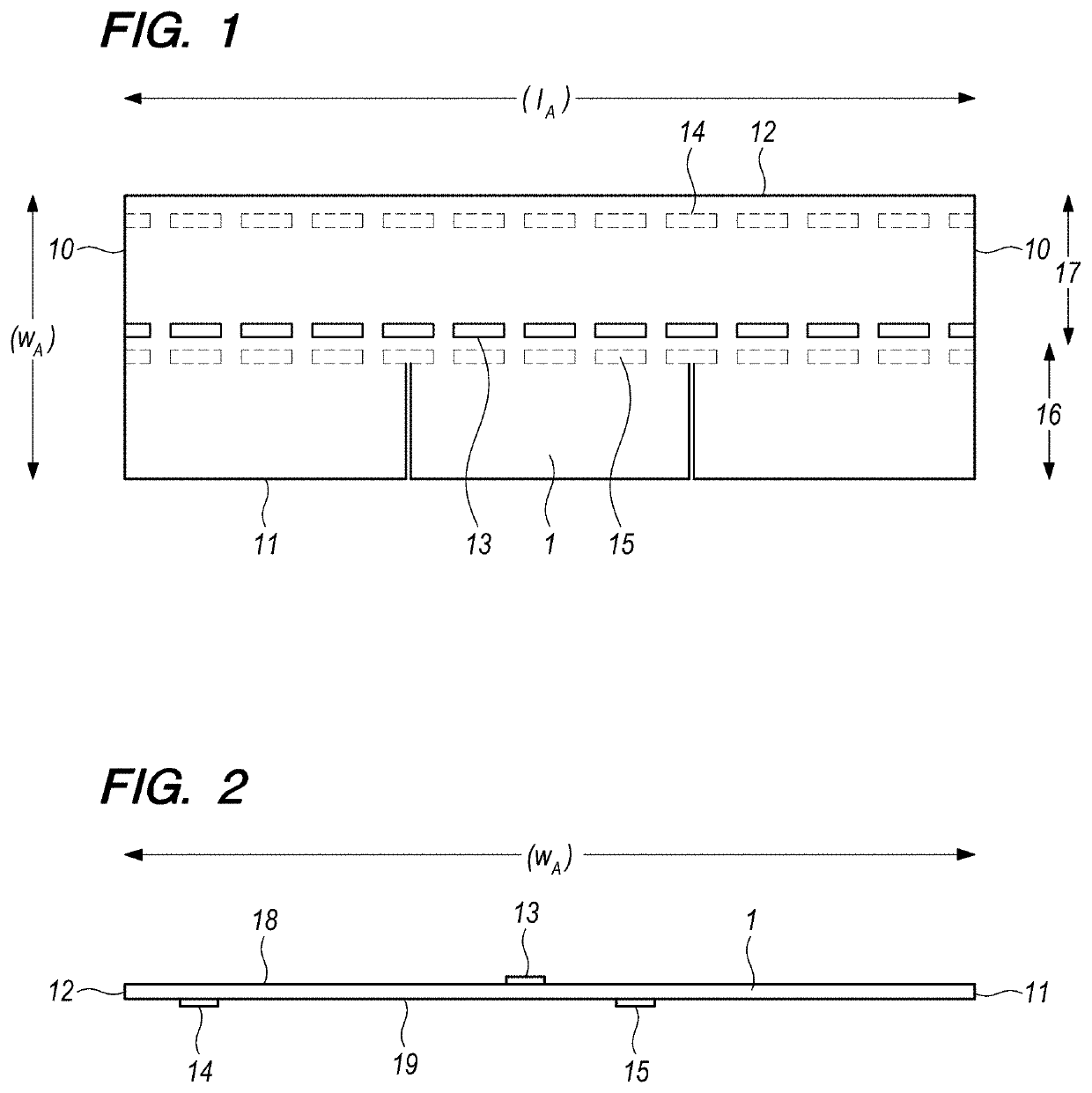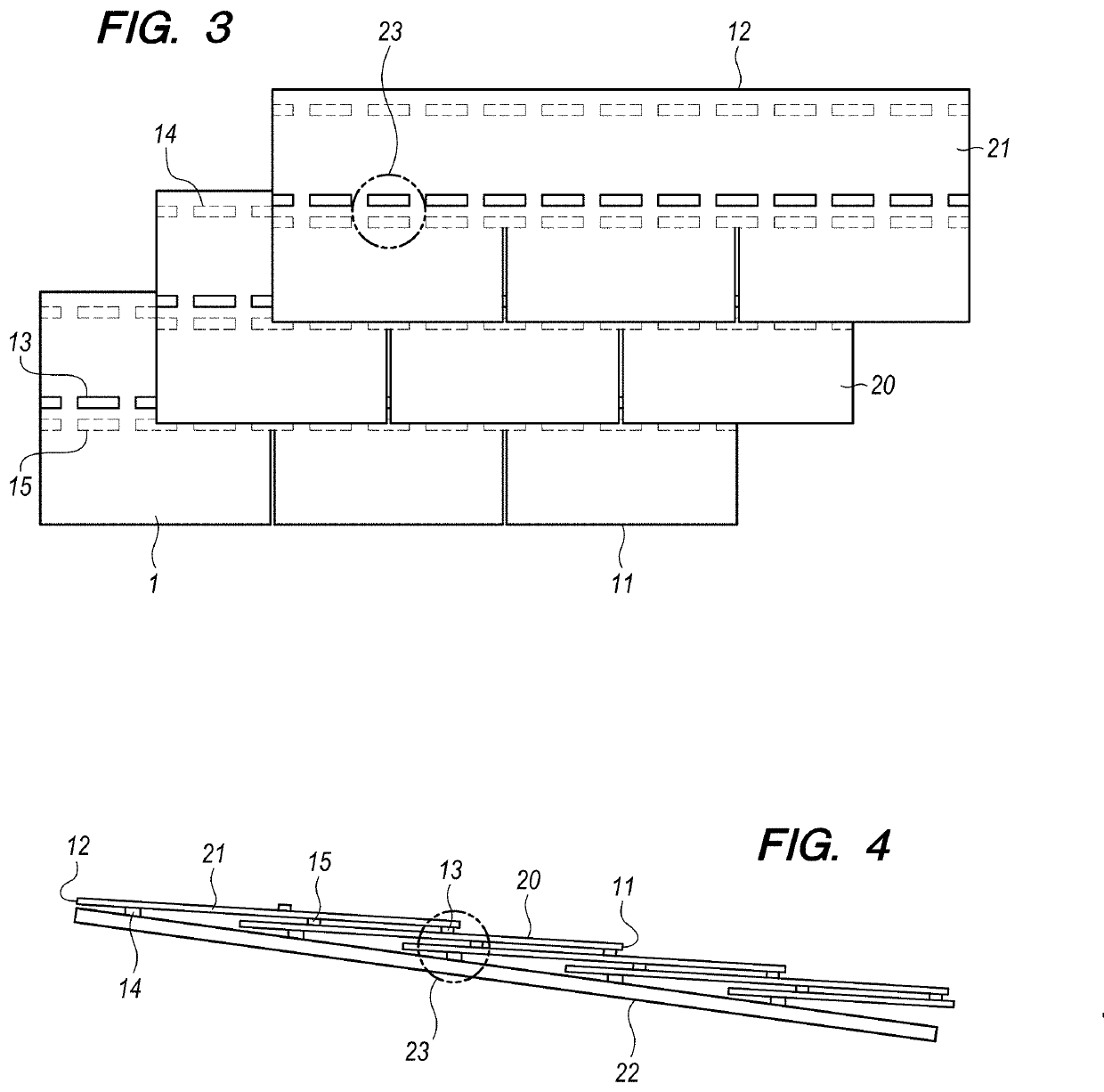Roofing Shingle System and Shingles For Use Therein
a technology for roofs and shingles, applied in roofs, roof coverings, construction, etc., can solve the problems of increasing the risk of water entry and loss of shingle anchoring, increasing the installation time and cost of mechanical fasteners, and presenting potential safety hazards for roofers
- Summary
- Abstract
- Description
- Claims
- Application Information
AI Technical Summary
Benefits of technology
Problems solved by technology
Method used
Image
Examples
example 1
Wind Performance Testing
[0129]Commercially available GAF Timberline HD laminated shingles (available from GAF, Baltimore, Md.) have a single back sealant line near the lower edge of the bottom layer. Two additional sealant lines of melted asphaltic adhesive Polyco 3120 (available from US Polyco, Ennis, Tex.) were applied to these shingles using templates to form dashed sealant strips. One sealant line was positioned on the back surface of the upper layer about 3 inches from its top edge. Another sealant line was positioned on the back surface of the shingle at the nail zone (i.e., near the top edge of the backer strip). A 50″×60″ test deck of these shingles was tested in a wind tunnel for ASTM D3161 Class F (110 mph) wind resistance. The shingles were applied to the roof deck at 2 / 12 slope without any nails or fasteners.
[0130]In Test Deck #1, the underlying plywood roof deck was covered by an underlayment of 15# roofing felt that was attached to roof deck using tin cap nails. In Tes...
example 2
[0139]Laminated shingles (Timberline HD shingle from GAF in Tuscaloosa, Ala.) were mechanically indented to test the effect of mechanical indentation upon slump resistance performance. The shingles were mechanically indented along the center line of the laminating adhesive in the common bond area, see FIGS. 13 & 14. The indentation was made by using a punch wheel and tractor roll as illustrated in FIGS. 15 & 16, wherein the punch wheel and tractor roll were synchronized in speed with the movement of the shingle web during shingle making. The mechanical indentation was done immediately after the top layer (or “dragon tooth” layer) was combined with the bottom (or “backer”) layer. The indentation used has the geometry shown in FIG. 16. The depth of the indentation was targeted at 0.156″, which is 84% of the average thickness of the common bond area. The resulting shingles had a uniform line of mechanical indentation along the center line of the common bond area, and the resultant shin...
example 3
[0154]The laminate shingles in Example 2 were mechanically indented with a number of different punch geometries and with varying indentation depths and / or spacing to study the impact of these parameters on cracking induced by the standardized shingle bundle handling test. The results are shown in Table 1. The data in Table 1 demonstrate that the punch geometry with medium radius punch head, 65% or less punch depth, and larger spacing at 2″ has the lowest potential for cracking during shingle handling by a roofer. The data further show that the rounded rectangular and small dome (hemisphere) punch geometries produce the least cracking during handling.
TABLE 1IndentationIndentationOutcomesGeometryVariables(# of cracks)IndentationShapeRadius,Width,Length,punchpunchsurface crackcrack throughTypeDescriptioninchinchinchdepth, inspacing, inin the backto the topArounded0.1280.250.10.156133rectangularArounded0.1280.250.10.156214rectangularBrounded0.1250.250.10.125135rectangularBrounded0.1250....
PUM
| Property | Measurement | Unit |
|---|---|---|
| Fraction | aaaaa | aaaaa |
| Fraction | aaaaa | aaaaa |
| Fraction | aaaaa | aaaaa |
Abstract
Description
Claims
Application Information
 Login to view more
Login to view more - R&D Engineer
- R&D Manager
- IP Professional
- Industry Leading Data Capabilities
- Powerful AI technology
- Patent DNA Extraction
Browse by: Latest US Patents, China's latest patents, Technical Efficacy Thesaurus, Application Domain, Technology Topic.
© 2024 PatSnap. All rights reserved.Legal|Privacy policy|Modern Slavery Act Transparency Statement|Sitemap



